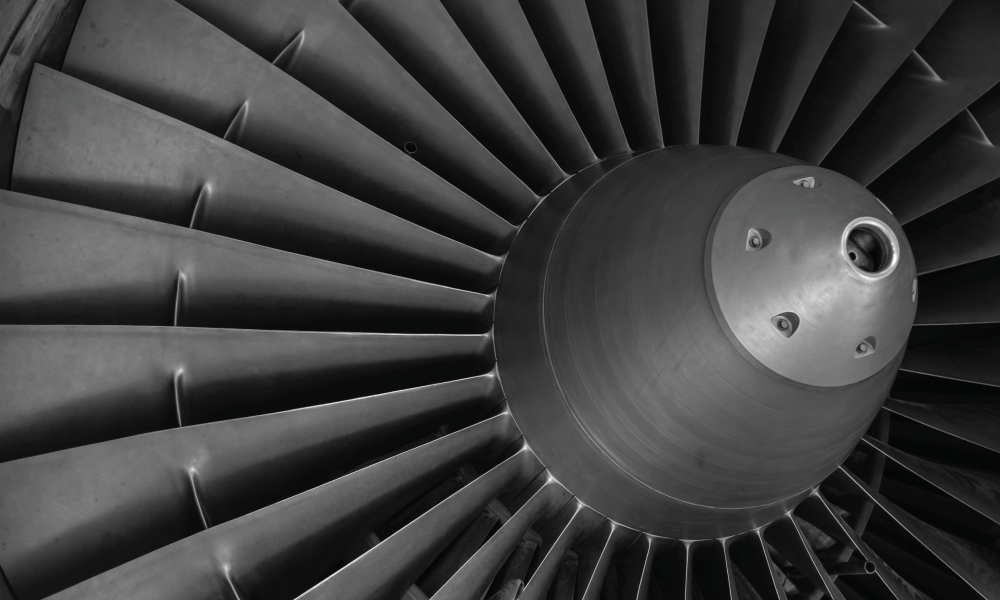
How to leverage component data to improve asset utilisation and transition planning
Author:
Lloyd White
Product Manager – Lifecycle Asset Management (LAM)
Managing the lifecycle of an aircraft, including transition planning, requires careful coordination of multiple factors: the condition of the aircraft, its maintenance history, in addition to following the terms of any lease agreements.

A key element in this process is the management of aircraft components—from major assemblies such as engines and landing gear to smaller parts and control systems. By effectively using component data, airlines and operators can not only enhance asset utilisation and streamline transitions but also find opportunities to improve revenue whilst avoiding unexpected costs.
Of course, having access to component data is essential, but the real challenge lies in using it effectively. This is where advanced software and automation play a crucial role, empowering aircraft owners and lessees to support efficient operations throughout the asset lifecycle.
Assess component condition
Leveraging live data from your Maintenance & Engineering (M&E) software enables operators in line with their reliability departments to accurately assess each component’s condition and address potential issues before they escalate
While this data primarily helps prioritise maintenance to keep the aircraft airworthy, combining it with digital insights into lease contract terms enables operators to ensure that component conditions meet lease return requirements. Given that airworthiness standards and lease return conditions often differ, the ability to track component condition in this way helps avoid costly surprises later.
This proactive approach also allows operators to retain high-value components within their fleet rather than returning them with minimal use, thereby optimising financial resources and preserving internal assets, whilst ensuring that they are not devaluing the transitioning aircraft when returning it to its owner/lessor.

Optimise maintenance schedules
Component data also supports the optimisation of maintenance schedules by identifying parts nearing the end of their useful life or those requiring more frequent inspections. This proactive approach helps reliability teams prevent unexpected failures, minimises downtime and ensures components are serviced in a timely manner.
Efficient maintenance scheduling also helps with engine shop visit turnaround times, which can be one of the more challenging aspects of an aircraft redelivery.
With Lifecycle Asset Management (LAM) software, you can go even further by simulating future scenarios based on variables such as utilisation changes, schedules and other operational factors. This predictive functionality instantly reveals the impact on component conditions, enabling the most effective planning for both routes and maintenance.

Manage asset utilisation
By effectively tracking component usage and lifecycle timelines, airlines and operators can better manage asset utilisation to maximise value across their fleets. This proactive approach includes optimising schedules for non-critical maintenance tasks, which can help reduce operational downtime and improve aircraft availability and component reliability.
Additionally, by identifying components that are nearing the end of their service life or are no longer needed, operators can generate additional revenue by repurposing, selling, or leasing out excess components. This not only improves cash flow but also frees up storage space and reduces inventory holding costs.
Moreover, effectively managing component usage in this way can streamline the asset transition process, as well-maintained and actively monitored parts are easier to track and transfer, ensuring a smoother redelivery and minimising costly delays at the end of a lease term
Mitigate transition costs
Consolidating component data and tracking it throughout its lifecycle empowers operators to better manage and mitigate transition costs. Proactive maintenance planning during the lease period becomes particularly vital as the aircraft approaches its redelivery. A well-planned schedule minimises the risk of last-minute maintenance, reducing the likelihood of aircraft-on-ground (AOG) charges or penalties due to lease return delays.
Moreover, robust parts-swap functionality, available in advanced software like flydocs LAM, offers valuable visibility. This feature allows operators to assess whether components from other aircraft within the fleet meet lease return conditions, potentially reducing the need for new purchases.
For a fleet of 100 aircraft, this functionality could yield annual savings of up to £1.7 million.
Maximising value through Lifecycle Asset Management
To summarise, effectively leveraging component data enables airlines and lessors to improve asset utilisation, reduce transition costs and ensure a seamless transition process. By understanding component conditions, optimising maintenance schedules and managing utilisation effectively, operators can maximise asset value and minimise operational risk.
Implementing a robust lifecycle asset management system supports these objectives by offering a clear, holistic view of component data and unlocking insights to extend the lifespan and usage of each part. With a single source of data, dashboards can provide personalised recommendations on each aircraft, improving confidence and trust in the real-time data required for decision-making and forward planning.
Want to learn more?
Get in touch with Lloyd or the flydocs Sales team for a more in-depth walkthrough around your tailored needs.
